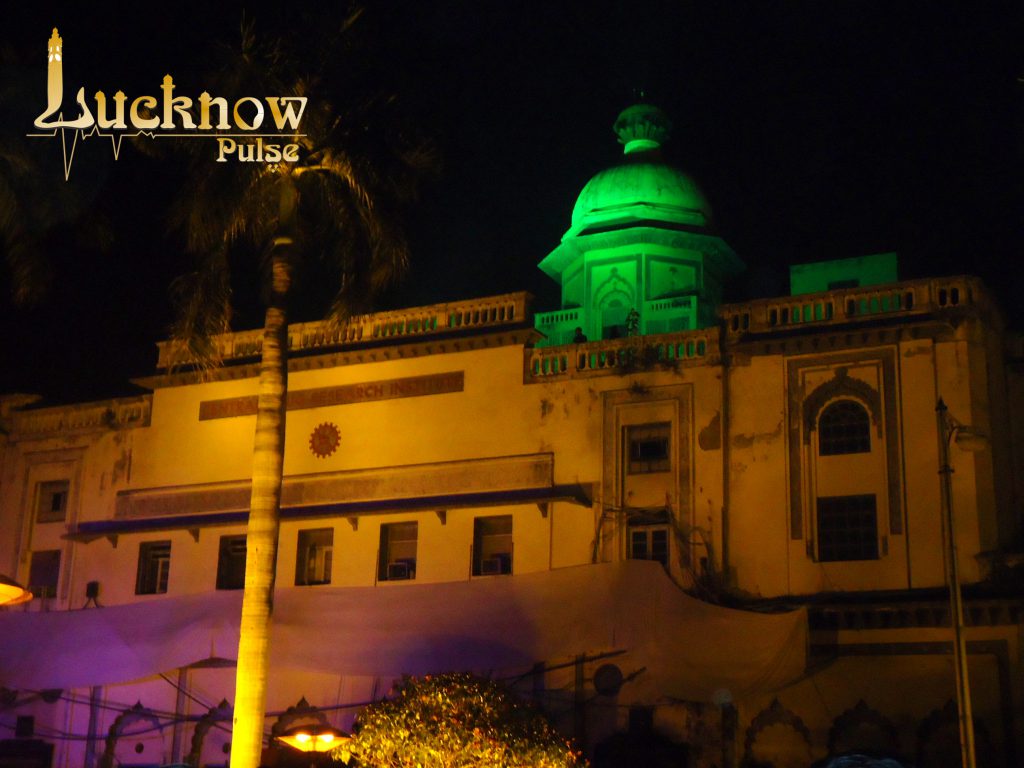Driving through the Qaiserbagh area is a sheer delight for heritage lovers. Passing by a palatial building built towards the south of the Macchi Bhawan on the banks of the river Gomti, most Lucknowites will tell you about the accomplishments of the research institute that operates from there. The present generation of Lucknow knows about the Central Drug Research Institute (CDRI) but is unaware of the history of the building which houses the institute.
The awareness about Chhattar Manzil, a name not many Lucknowites are familiar with, its association with the glory of the Nawabi era, and its history will be highlighted now after conservation and maintenance work has been started there in full swing. The use of the building for research purpose by CDRI led to several modifications and renovations over time since the first Prime Minister of India, Pandit Jawaharlal Nehru inaugurated the premier research institute in the Chhattar Manzil premises.
With a vision to build and promote the drug research in the country and farsighted belief, the Central Drug Research Institute was inaugurated on 17th February, 1951 at the Chattar Manzil in Lucknow.
Chattar Manzil is another example of beautiful Mughal architecture with hints of Persian and Turkish architectural finesse.
History of Chattar Manzil
Among all the imposing monuments built by the Nawabs of Awadh, Chattar Manzil in Lucknow is a prime example of beautiful Nawabi-era architecture. The monument displays the old world charm that Lucknow is so famous for. It was built under the patronage of Nawab Ghazi Uddin Haider and completed after his death by his successor, Nawab Nasir Uddin Haider. The building served as a residence and fortress for the royal family of Lucknow.
The unique aspect about the Chattar Manzil is the unusually different architecture. The noticeable architectural feature of this grand monument is the unique umbrella-shape dome from which the monument derives its name.
The architecture of Chhattar Manzil incorporates some beautiful elements of the Persian and European architecture as well. The Nawabs of Awadh were deeply influenced by the contemporary style architecture of Europe. Therefore, many monuments and structures in Lucknow have some elements of European-style architecture.
The core of this splendid structure is the famous Kothi Farhat Baksh. Major General Claude Martin is said to have ordered the construction of Kothi Farhat Baksh inside the Chhattar Manzil. It was built in the year 1781. However, the kothi was acquired by Nawab Saadat Ali Khan, and it became an integral part of the Chhattar Manzil complex. During the Mutiny of 1857, the Chhattar Manzil became a stronghold for the Indian freedom fighters.
The huge building was utilized as a place for United Services Club till 1947. Since 1951, the Chhattar Manzil has served as the home to the Central Drug Research Institute (CDRI). In the year 2007, when the management of CDRI needed more space for work, an expansion in the form of new construction within the premises was suggested. The idea got rejected on grounds of preserving the archaeological heritage of the city. The decision was lauded by archaeologists and all the Lucknowites who love the city.
Chhattar Manzil Today
The need for expansion of the Central Drug Research Institute stimulated the shifting of the research institute from Chattar Manzil to its new campus at Jankipuram Extension, Sitapur Road, Lucknow.

The Government of Uttar Pradesh has proposed a city museum to come up in the premises of Chhattar Manzil. The government has also planned the construction of a special gallery inside the complex showcasing Lucknow’s rich history filled with amazing artifacts. Visitors to the museum will get a feel and glimpse of Lucknow’s glorious past.
Visitors to Lucknow must keep the Chhattar Manzil high on their itinerary for the next visit to delve into the glorious past of Nawabi city.


Comment here